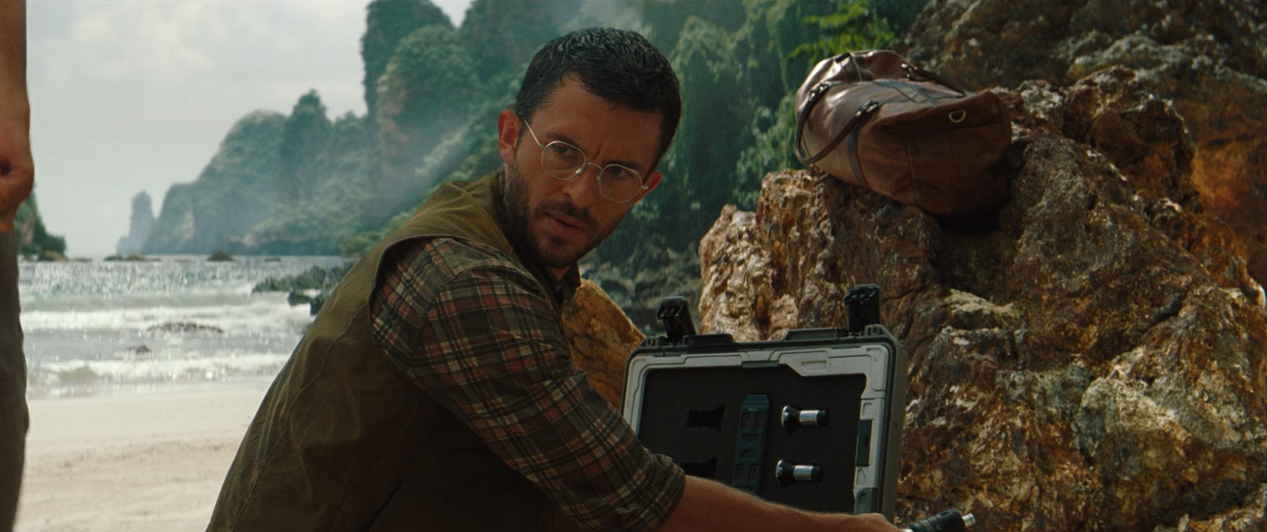Jurassic World Rebirth
During World War II, Allied Forces built airstrips around Melanesia as staging posts for fighters and bombers to refuel and resupply for long distance combat against Japanese forces. To the indigenous tribes living on the islands it was as if the gods themselves had come down, literally flying down from the heavens and leaving artifacts of their passing behind. Such was the impact of these moments that after the war, when the military had left and no more cargo came to the islands, some islanders began building mock airstrips, control towers and even planes out of the bamboo, wood, reeds and other elements they had at hand, trying to bring the precious cargo drops back by replicating the surface conditions of their arrival without ever comprehending what they had witnessed or how it happened the way it did.
One imagines a similar reaction from a generation of filmmakers watching Steven Spielberg’s Jurassic Park when it first came out (or George Lucas’ Star Wars before it), filled with awe at the cinematic spectacle but unable to understand what was going on beneath the surface to make it work the way it did, just knowing they wanted to experience it again. Certainly a generation of studio executives did. And the result is the cargo cult version of the original: a replication without spirit or soul, trying to call back the original through ritualistic adherence to the forms rather than thought or creativity.
Moreso than any recent big studio film, Jurassic World Rebirth reeks of the studio requirement. At points it is possible to see the list of elements believed to be necessary for a Jurassic Park/World film. Dinosaurs, yes obviously, but also the remote island location, children and family members becoming stuck on the island for extra jeopardy, evil corporate villains willing to sacrifice anything for the wealth living dinosaurs could bring, dangerous flight among stalking predators through an empty laboratory … it’s even more of a complete recreation of the original than the first Jurassic World was. Gone is any attempt to move the threat to a new milieu or come up with new ideas. Over the last five years al of the dinosaurs roaming the wild at the end of the previous film have died from various environmental ailments, the survivors retreating to remote equatorial islands and jungles to live out their remaining days … including an island off the coast of French New Guinea which just happened to once host a secret Ingen dinosaur lab.
What comes from there doesn’t need much explaining because if you’ve seen any Jurassic Park film, you have seen Rebirth. Director Gareth Edwards and writer David Koepp (returning to the franchise for the first time since The Lost World) are solid pros who approach the material in exactly that manner with fun, competent set pieces and no sense of danger or wonder whatsoever. Moments here and there standout, particularly an all to brief flight through a swamp with a lit flare that feels like a lost element of Vittorio Storaro’s Apocalypse Now shots except with a giant dinosaur entering the frame. Moments like that can’t really change things for Rebirth, nothing can, but they can give at least the idea that a human being is thinking about these things even if they are not in control of their own fate.
More even than the cargo cult replication, Rebirth feels like the filmmaking generated by AI that the industry has been worrying over for so many years now. All of the ingredients of a Jurassic Park film have been fed into the computer and competent and soulless reproduction has come out, one incapable of holding new ideas, only of endlessly replicating what it has already been shown. At this rate Hollywood does need to worry about AI doing this to the business, they will have already done it themselves.
4 out of 10
Starring Scarlett Johansson, Mahershala Ali, Jonathan Bailey, Rupert Friend, Manuel-Garcia Rulfo, Luna Blaise, David Iacono and Audrina Miranda. Directed by Gareth Edwards.




